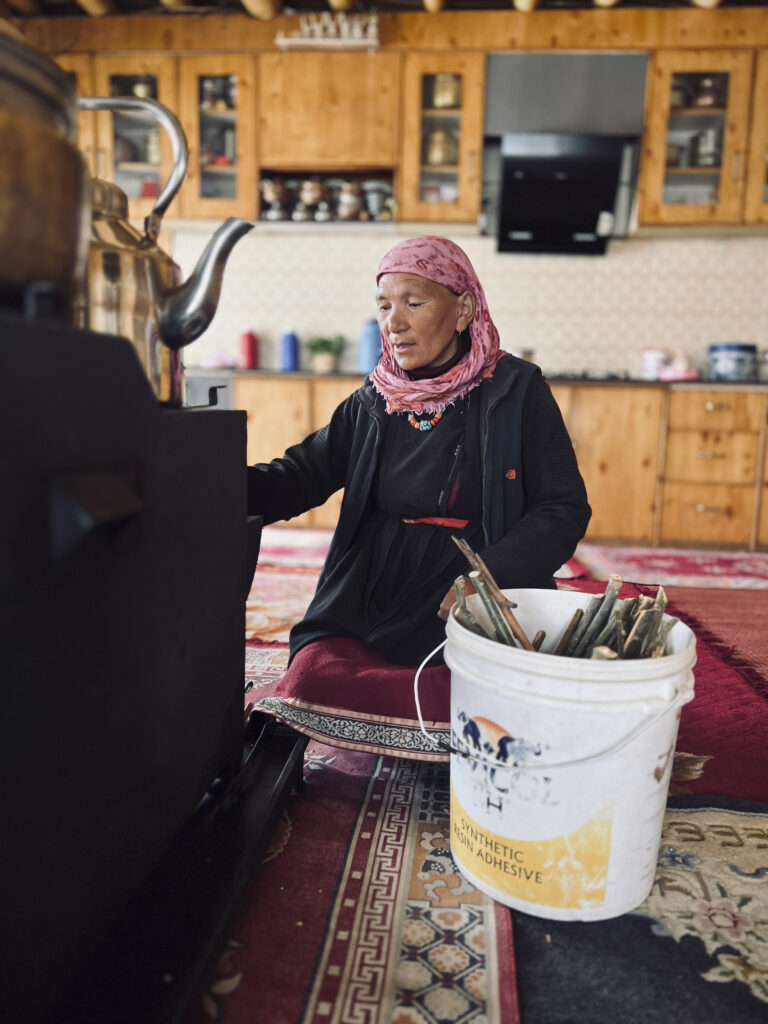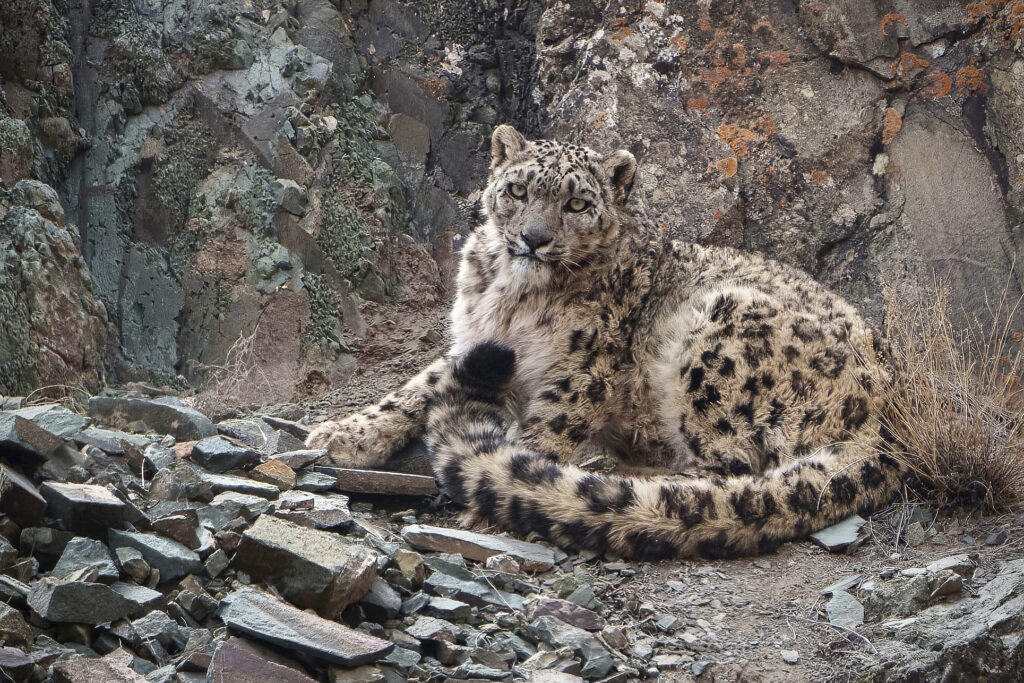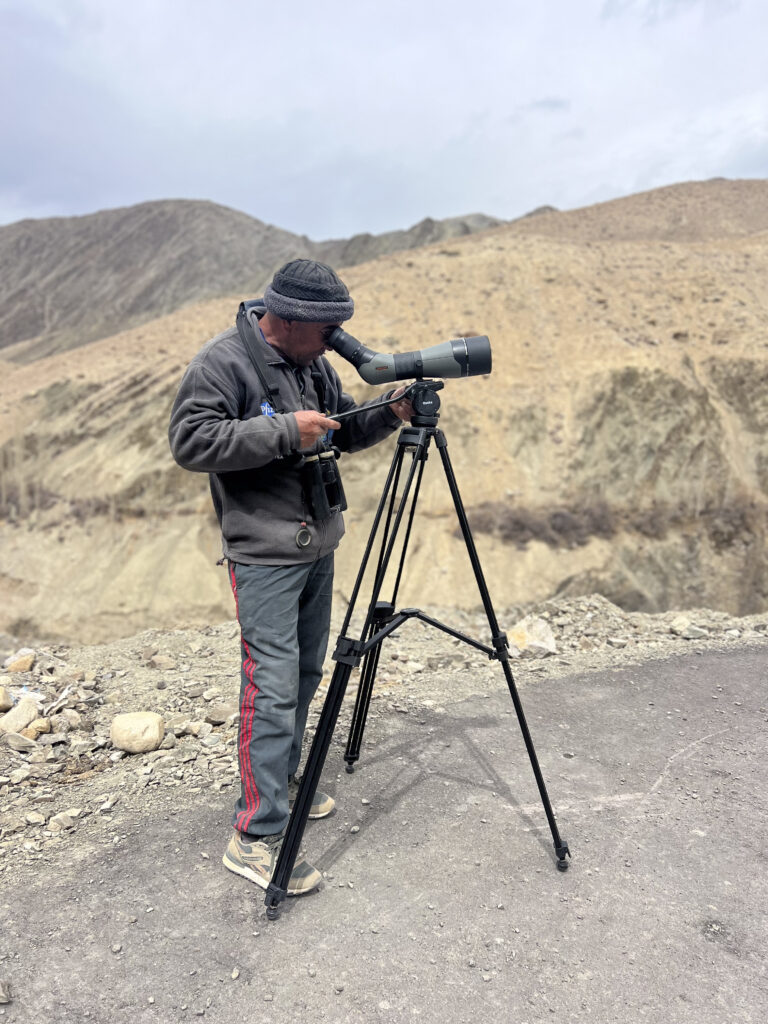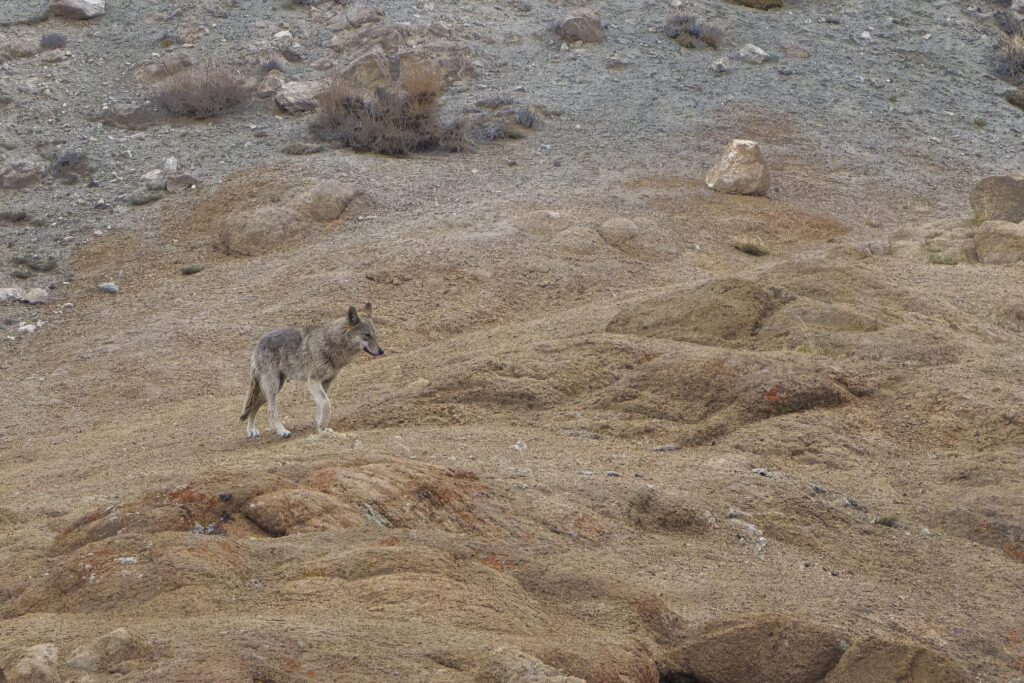Searching for Snow Leopards: An Ecosystem Strives for Balance at the Top of the World
- Published In: Other News & Features
- Last Updated: May 30, 2023

By Matt Stirn
Special to the Wyoming Truth
The steep granite slope rose in front of us, stretching towards the mountain’s horizon at nearly 16,000 feet. To the right, streams of Buddhist prayer flags fluttered atop the crest of a mountain pass, and to our left, the sound of voices chanting and horns blasting echoed from a village monastery located far in the valley below.

I held a steaming cup of masala tea in one hand and scanned the seemingly endless rocky terrain in front of me, hoping luck would grant me a momentary glimpse of one of the most well-camouflaged and elusive animals in the entire world. As a snow squall began to move towards us and my arm grew weary from holding the binoculars, our guide peered intently into a spotting scope and suddenly yelled, “There! Above the cave!”
Pointing my binoculars to where I had just been scanning, I saw a camouflaged shape take form. As if a part of the mountain itself was coming alive, the previously still object began to move: a long white tail unfurled, a head turned and the two piercing eyes of a snow leopard stared straight back at me.
For a week in April, I traveled through the high mountains of Ladakh, a region nestled in the Himalaya, Karakoram and Zanskar Ranges in northern India along the border of Pakistan. Ladakh has always considered itself unique from the rest of the country and was part of Indian- administered Kashmir until it became its own state in 2019. The mountainous region has some of the best-preserved Tibetan Buddhist culture in the world. It’s also home to traditional communities of nomadic tribes and is one of the best places on earth to see snow leopards and Himalayan brown bears.
In other words, Ladakh is a photographer’s dream—and the perfect place for me to lead and instruct a group of eight photographers from around the United States through Summit Workshops. The program focused on conservation storytelling, photojournalism and the complex relationship between humans and predators in the mountainous realm.

Wildlife biologists estimate that there are somewhere between 4,000 to 6,500 snow leopards in the wild. Their range stretches from Tajikistan east across the full breadth of the Himalaya to China and north to Mongolia and Russia. While they are not necessarily the rarest animals in the world, snow leopards, often called the “ghost cat,” remain some of the most infrequently seen wildlife as they silently move up to 20 miles each day through treacherous terrain over 18,000 feet in elevation to stalk herds of ibex, urial and yak.
The leopards share their home with other large predators, including Himalayan brown bears and Tibetan wolves. While all three species tend to keep to themselves in the high peaks, they occasionally run into trouble with humans who live or herd livestock in the high Himalayan valleys.

While searching for the ghost cat, our small group of intrepid travelers stayed in the mountain village of Hemis Shukpachan at the home of an octogenarian couple named Disket and Tashi Dorjay. They have always welcomed visitors to their community and officially turned their home into a guest house as wildlife tourism became more popular over the past decade. Ten small rooms surrounded a kitchen and communal space blanketed in brightly colored Tibetan carpets with a wood burning stove at the center—the building’s only source of heat.
Living among leopards and wolves brings in business, but it also has its downfalls. Earlier in the spring, a snow leopard took a neighbor’s yak and just one week before we arrived, a pack of Tibetan wolves entered the village and killed Disket’s only cow. Without it, the couple will be short a serious investment and unable to produce much-needed milk for tea, yogurt and cheese. Disket shared the story over cups of butter tea about how she found her dead animal one morning, and we asked what would be done about the wolves.

Disket poked at the wood burning stove in the center of the room, shrugged and told us that nothing could be done. I looked up in surprise—and so did another Wyomingite who was along for the trip—because where we’re from, the death of somebody’s animal almost always results in swift retaliation against not just the culprit but also the entire predator’s population in the vicinity. “Yes, I’m sad that my cow was killed,” Disket said, “but the wolves and their newborn pups have a really difficult life…they also need to eat.”
A fund set up by her village and paid for by tourists like us will help Disket buy another cow, and the wolf pups will live another day to grow and explore their mountain home. Being from Wyoming and working as a photographer in over 50 countries, I have only ever witnessed violent competition among farmers, ranchers, herders and wild predators.
Staring out the window as fresh snow began to fall on the Buddha statue outside, Disket poured me another cup of salty butter tea. I couldn’t help but smile, knowing that in at least one tiny mountain village in the corner of India, people and animals have found a way to coexist.













